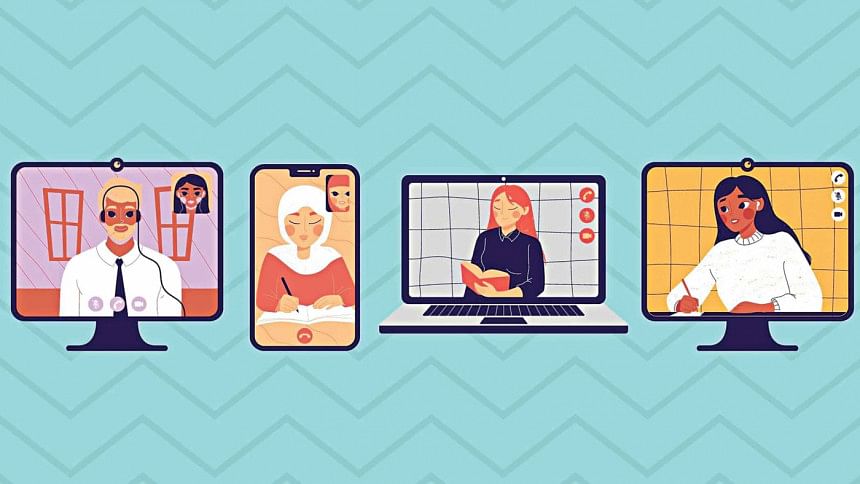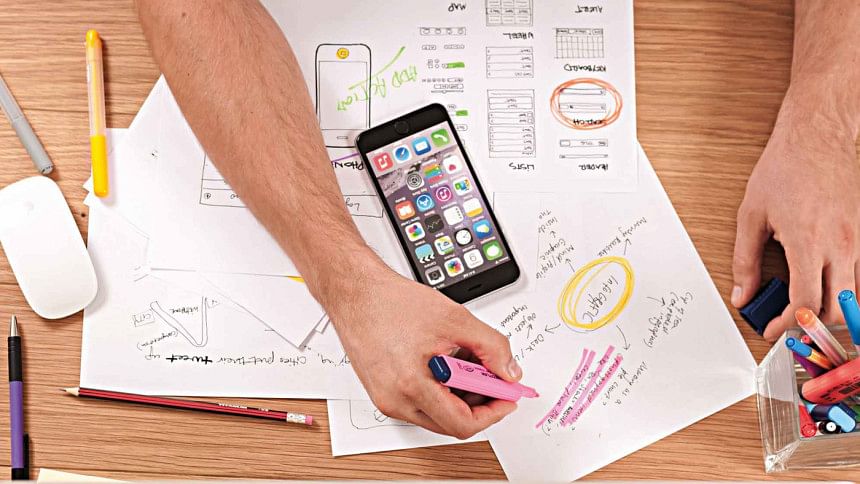Digitisation and education: Lessons learned during pandemic

Earlier this last year when the first wave of Covid-19 swept the country and plunged the nation into an uncertain lockdown, it painted a particular grim picture for the education sector of the country. Most institutions in the country were far from prepared to handle a crisis like that. They lacked the digital infrastructure and the experience that was needed for a smooth transition to remote learning in the wake of the pandemic.
Yet, one year down the line, classes in most private universities of the country are running in full swing while the public universities are yet to catch on. According to a World Bank data, an average of around 3,800 classes are being held online daily with more than 2,20,000 students in attendance.
The authorities and concerned agencies deserve a laud for promptly setting up the infrastructure and making them available to the institutions; without them, this tremendous feat would not have been possible. But in our discussion regarding the tools that made it possible, we must concentrate and pay a special tribute to the one tool that caused a silent revolution in making the newly digitised education sector accessible to all: smartphones.
Amid the pandemic, the use of smartphones has shifted radically. Students, especially those who were forced to retreat to their remote homes, picked up their smart devices and tuned in online classes to continue learning from a distance. Instructors quickly acclimatised themselves with the system and soon enough, education, for the most part, was back on track.
It certainly helped that over the years, smartphones have moved away from being a luxury commodity to a necessity, ending up in the hands of almost every other millennial and Gen Z in the country in one way or another.
Bangladesh Bureau of Statistics' multiple cluster survey from 2019 shows that only 5.6% households in Bangladesh have access to a computer. Smartphones played a huge role in closing this gap and making education as well as entertainment and information available to a wider audience as a cheap and convenient alternative to computers.
From education to work and entertainment and everything in between, smartphones became the go-to for the youth of the country. The pandemic just showed us a glimpse of the role smartphones can play in making information technology available to all; even in lockdown, we saw how everyone stayed connected on social media through their smartphones.
Wide access to smart devices to the youth in both urban and rural areas alike meant that the pandemic and the subsequent remote learning initiatives did not catch the students completely off-guard. As they slowly, but smoothly grasped the concept of remote-learning, it also paved the way for introducing new and improved learning tools.
It opened up new avenues of flexibility for students and teachers alike. Smartphones of today are packed with features and with unlimited capacities, there's very little that a smartphone can't pull off. So, it didn't pose much of a hassle when students who lack high-end gadgets and devices, picked up their smartphones and joined their classmates in online classes, overcoming a significant technological barrier.

According to the 2020 annual report published by Bangladesh Telecommunications Regulatory Commission (BTRC), internet density in the country stood at 61.07 per cent in 2019-2020. 3G subscribers in the same year were 5 Cr 7 lac while the number of 4G subscribers stood at 3 Cr 52 lac. Despite this surge in subscribers, the flow of accessibility was halted at times when students found themselves out of network coverage in remote areas, unable to join their counterparts in an education revolution. This unfortunate scenario goes on to show us that despite huge strides and advances made towards a digital and inclusive Bangladesh, digital divide still prevails in the country.
Moreover, although the demand for smartphones skyrocketed in the pandemic as access to online education through smartphones proved to be a cheap, easy and efficient way to continue learning remotely, the growth of smartphone users remains surprisingly low. So far, Bangladesh's smartphone penetration is only one-fourth of the total sales of handsets. Smartphones currently account for 30 percent of the handsets sold, while feature phones have a market share of more than 70 percent.
In the smartphone market, there is huge potential, but the volume of business is not growing. Because of the increase in the duty rate, the grey smartphone market in Bangladesh has seen a sudden alarming spike. According to estimates, a total of 25 lakh cell phones worth BDT 3,000 crores are illegally imported every year into the nation.
As the government started rolling out vaccines already, the pandemic is almost coming to end. Educational institutions will open soon enough and before we know it, things will go back to normal. But if we learned anything from the experience of the pandemic, it's that remote learning and tech assisted learning is here to stay with their options for flexibility and limitless access to countless resources.
Although progress has been substantial, there is still a long way to go. Significant investment is needed to keep up with the increasing demand for virtual learning, equipment and infrastructure needs as well as to train the instructors to make more online classes more engaging and interactive. It is commendable how industry leaders have stepped up to handle the crisis and have played their parts in keeping everyone connected throughout this pandemic. We have seen initiatives from the government and agencies like the World Bank in facilitating online and remote education for the youth.
Covid-19 has forced us to rethink our lifestyles and change the regular course of things we have done before, but smartphones have allowed us to adapt from the spaces in which we are confined to new ways of carrying on the same. It took a pandemic for us to realise the massive untapped potential of smart devices in the educational sector. As we navigate the freshly discovered arena of digitised education, should at least leave us with the teaching that in a connected world, smart devices are set to become the next game changer in educating the youth. There lies a long road ahead, but at least it's bright and hopeful.
The author is the Country General Manager of Xiaomi Bangladesh.

 For all latest news, follow The Daily Star's Google News channel.
For all latest news, follow The Daily Star's Google News channel. 



Comments